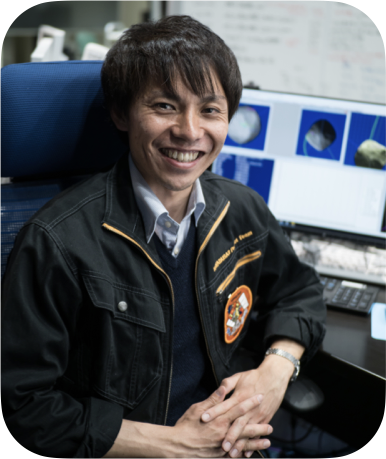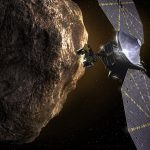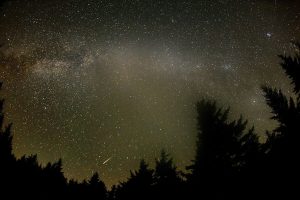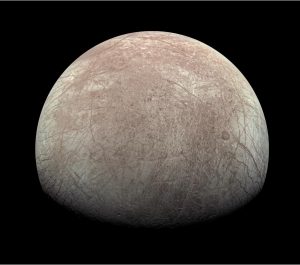
Global space news: the importance of planetary defence
Legends of the occurrence of celestial impacts can be found across the world. While it is difficult to judge the truth of these tales, it is fact that celestial bodies have collided with the Earth and that these collisions have caused great damage.
Yoshikawa Makoto, Hayabusa2 Mission Manager
The threat of an asteroid colliding with the Earth is a hot topic, both in terms of recent headlines and the destructively high temperatures that would result in such a disaster. Over the last month, journal papers have covered suggestions that a massive explosion in Eastern Siberia along the Tunguska River in 1908 could have been caused by an asteroid merely grazing the Earth’s atmosphere, that the Biblical account of the destruction of a city may have been from a meteorite explosion, and how future disasters might be avoided by breaking apart an in-coming asteroid.
Studying the prevention of Earth impact disasters is the field of “Space Guard” or “Planetary Defence”, explains Professor Yoshikawa Makoto, Mission Manager for Hayabusa2. It is an area in which JAXA are extremely active, using both space missions and ground-based observations to learn more about potential threats and ways these might be countered.
The Chelyabinsk meteorite fell in Russia in 2013 and caused considerable damage, while the 1908 Tunguska event is said to have destroyed 2,000 square kilometres of trees in a celestial impact. The size of the celestial bodies that caused this damage is estimated to be about 17m for the Chelyabinsk meteorite and 60 ~ 100m for the Tunguska event. So even small celestial bodies can be the cause of major destruction.
Yoshikawa Makoto
This makes collisions with celestial bodies with the Earth a very big form of natural disaster, but it is completely predictable if the celestial body that is on a collision course can be discovered early. Therefore, activity known as “Space Guard” (now also called “Planetary Defence”) began in earnest in the 1990s, and more and more celestial bodies approaching the Earth (NEO: Near-Earth Objects) have been discovered. At present, around 27,000 NEOs have been found and, since the orbit of these NEOs is known, the possibility of an Earth collision has been calculated and confirmed. In fact, none of the currently known NEOs will collide with the Earth in the near future. However, we have no idea what has not been yet discovered, so work continues to search for undetected NEOs.
As a result of this work, the total number of asteroids discovered is currently over 1.13 million. JAXA is developed technology to discover NEOs and also conducts observation activities.
Professor Okada Tatsuaki is a member of the Japanese team working on the ESA-led mission, Hera. Together with the DART mission from NASA, Hera is part of the experiment to deflect an asteroid in order to gain valuable experience and data should such a programme be necessary to protect the Earth in the future.
Like natural disasters such as earthquakes and tsunamis, asteroids colliding with the Earth are an inevitable potential hazard. Planetary Defence activities have begun to avoid such collisions, utilising a knowledge of planetary science and space engineering technology.
The majority of the asteroids that are expected to collide with the Earth within the next 100 years are small, with a diameter of less than 100m. The orbit of these asteroids can potentially be shifted to avoid a collision with the Earth by hitting the asteroid with a spacecraft travelling at high speeds. To prepare for this, it is necessary to thoroughly investigate the properties of these small asteroids and demonstrate the technology to actually perform the spacecraft collision with these small objects.
AIDA (Asteroid Impact & Deflection Assessment) is an international joint planetary defence mission that links NASA’s DART and ESA’s Hera programs. DART will launch in November this year and plans to perform a collision with the satellite of the asteroid Didymos, known as Dimorphos, in 2022. We plan to confirm the resulting change in the orbit of Dimorphos cause by the collision of the DART main spacecraft using the child probe separating from the main spacecraft and the ground observations. Hera plans to launch in 2024 and rendezvous with the asteroid pair to investigate the effects of the DART collision and the nature of the asteroids.Japan is a world leader in the field of asteroid exploration, and will provide Hera’s thermal infrared camera that has a proven track record in Hayabusa2. This plan for this instrument, as well as the participation of scientists experienced in asteroid missions, is to greatly contribute to the research of the asteroid science, in particular that of collision phenomena, asteroid terrain and asteroids’ thermophysical properties.
This is the beginning of a full-scale planetary defence collaboration between Japan, the USA and Europe.
Okada Tatsuaki, Associate Professor, Department of Solar System Sciences
In December 2020, the Hayabusa2 spacecraft passed by the Earth and left the sample capsule containing material from asteroid Ryugu. The spacecraft is now continuing on an Extended Mission that will rendezvous with asteroid 1998 KY26. Dr Mimasu Yuya, Hayabusa2 Navigation Guidance and Control Officer, explains that this class of asteroid may be a threat to the Earth in the future, yet very little is currently known about the properties of these types of space rock.

Hayabusa2 returned to Earth in December 2020 and has now begun an Extended Mission to sail towards the next target celestial body, 1998 KY26, using the onboard surplus fuel. 1998 KY26 is a very small asteroid with a diameter of about 30m. It rotates at an astonishing rate of one orbit every 10 minutes. This type of asteroid is expected to collide with the Earth once every 100~1000 years and cause great damage, but their true nature has never been revealed as observations from the ground cannot see the details, and no spacecraft has ever approached one of these asteroids. Hayabusa2 will therefore rendezvous with an asteroid from this unexplored class, clarify its physical characteristics, and establish methods of operation in the vicinity. This will deepen our knowledge of such celestial bodies that provide us with useful knowledge for planning countermeasures against an Earth collision.
Mimasu Yuya, Hayabusa2 Navigation Guidance and Control Officier
Hayabusa2 is due to arrive at 1998 KY26 in 2031, after first performing a fly-by of asteroid 2001 CC21. Both these events will allow us to gain experience at studying a potential threat to the Earth, and a close-up look at the properties that might aid a deflection that could one day save our home.
“Global space news” is a chance for us to highlight important developments across the world and share our excitement of these achievements.
Further information:
Hayabusa2 mission website
Hera mission


 Previous Post
Previous Post Next Post
Next Post






